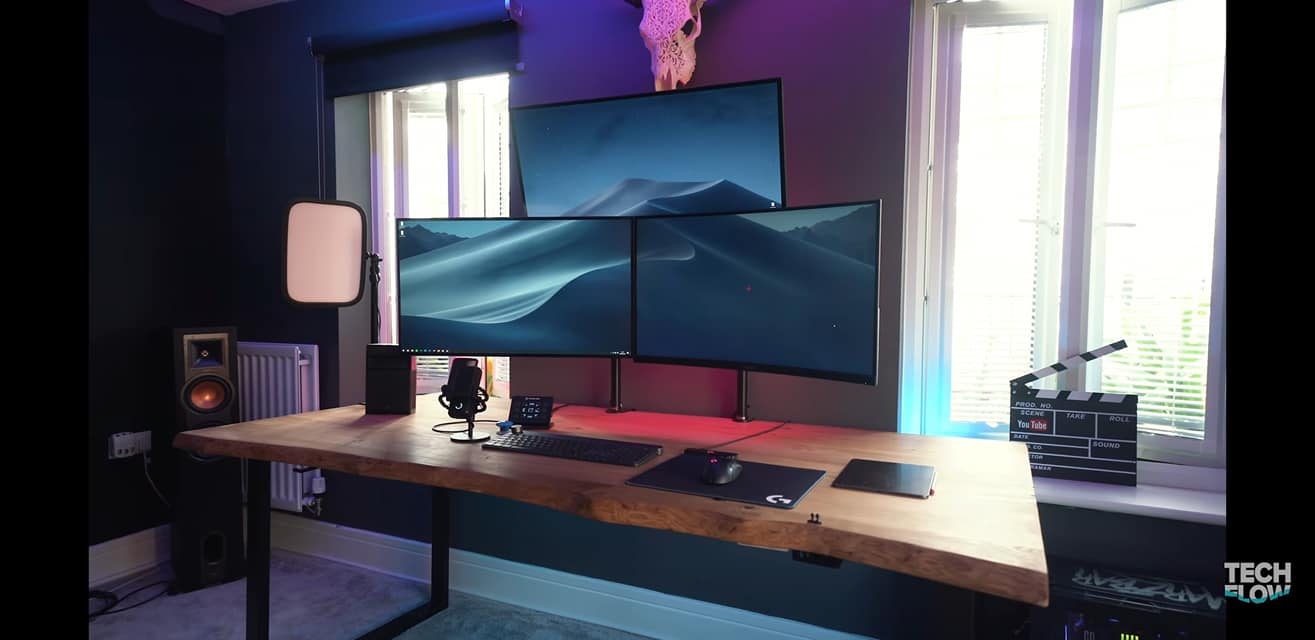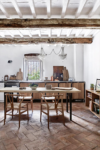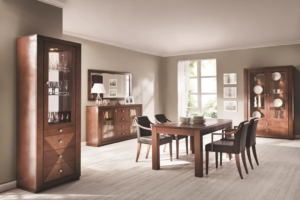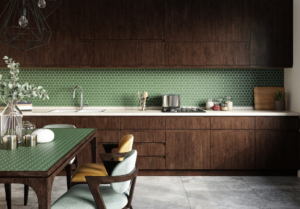How to set up an office at home?

Unfortunately, these are the times. Tier 3, Tier 4, national lockdown, etc. without end. More and more small businesses will move from crowded office centres to the privacy of their own home.
I want to begin by explaining the subtle difference between a cabinet and a home office.
The origins of the office go back hundreds of years. Reserved for the master of the home, it was his asylum, setting the boundaries of his male world. It was theoretically a place of mental work, but above all, it was an exposition of trophies (books, antlers, or collections of weapons), which helped to build a social position. To this day, having a cabinet means a certain prestige. It is not associated with a place of paid work, perhaps with the exception of writers, philosophers or academics, but it serves the purpose of contemplation and isolation from domestic matters. It most often appears in residences, villas, multi-metre houses, where one can afford the luxury of a room that is not very everyday.
A home office is an invention of the modern world. It means a place of daily, full-time or evening work, often as a second job or after hours. Sometimes it requires the possibility of accepting external supplicants. This model generates a completely different approach in its arrangement. Often the compulsion to create it means giving up other functions of home life. A corner is torn from the surface of the living room, stolen from the bedroom angle, or taken out of a previously unused room.
As long ago as 10 years ago, I was a bit exotic with my freelance job, and I was a bit of an attraction among my friends who took pride in their work in corporations. Working from home, at a private desk in my own room, I was perceived as working for pleasure in my free time from doing nothing sweet, because it is impossible to work seriously and regularly without going to the office every day. What else can I do all day long at home, like not sleeping until noon, relaxing and smelling of roses, and in short moments ‘something there’ to do what I call work?
Today, when the time has come for freelancers, largely forced by the economic situation and many people are setting up their own business because there is no way out, you look at working from home with a more gracious eye. It’s becoming a trend, Which only accelerates because of the pandemic. So my style of working today has also gained in importance in social evaluation. Only for many, it is not an easy task. Running an office at home is quite a challenge.
A good organisation of home life can help, but also a well-thought-out arrangement of the workplace itself. Work hygiene, its ergonomics and the environment in which you work will have an impact on your results and the sense of fulfilment in your professional life. Therefore, it is worth preparing yourself professionally to create the right conditions for you to get up in the morning and willingly “go to the office”.
As an interior designer, and at the same time as running a home studio for several years, she acts as a double expert, so I will show you in a few steps how to prepare to create the perfect workplace for yourself. Where to start?
1. Analyse how you work?
Do you sit alone for 10 hours in front of a computer screen and do you need little to be happy?
Do you connect on Skype in conversations with the whole world and shouldn’t the sounds of the house interfere with this?
Or do you work with loud music and you are the one who will disturb the house?
Do you need kilometres of paperwork or a large worktop to spread your workspace?
Do you have loud or quiet work? Do you need to concentrate, or do you prefer to stay in touch with your family?
Or do you accept contractors every day and your workplace should be located close to the entrance to your home?
This type of analysis will crystallise the most convenient place in your home plan.
Do you need an independent, lockable office or is it enough to arrange a living room for a secretary? This will also allow you to determine the location of the secretary.
2. How much space do you need to work?
Are you sure you only need a worktop, a large table or a narrow desk? Will bookcases, chest of drawers for materials such as paints, jewellery, threads, papers, or maybe boxes will be handier? Where will you place binders, bury utensils, rollers with designs, cut-outs, where will you place a printer, a large monitor or an armchair for your customers?
If you organise your space well from the beginning, it will be easier for you to work efficiently later. You won’t be upset that you can’t find something, and you won’t be able to throw suspicion on your children that they have taken important documents away from you somewhere. The truth is that the rest of your household should have limited access to your office. Squeezed in between the shelves in your husband’s office or in the hallway between the kitchen and the bathroom you may not feel comfortable. If this workspace is to serve you sporadically, to catch up on work after hours, or to store documents that you don’t find room for, then you can actually think of an arrangement. However, if you assume full-time work, don’t underestimate your needs, don’t underestimate the value of your profession, because it will affect the quality, as well as the attitude of you and all the household members, whom you quickly get used to, that your activity is some kind of whimsy, a hobby, from which the most trivial household matters will always be more important. So start thinking about your job with due respect. If you have to hire an assistant, will you offer her the same terms and conditions that you are currently dedicating to yourself? If you hesitate here, it is a sign that this place is not quite right for you either.
3. Where to work?
Of course, work style and adaptive skills are very individual and you may be one of those people who, when they get into work, do not mind. Then you have more flexibility in your choice of place because a corner in the kitchen corner will also be suitable. However, if your work needs to be focused and your workshop needs to keep it tidy, or if it needs child protection, think about how to rearrange your living space to create an isolated space for your office. Ideally, when you can use the whole room for this. Ideally away from the night area and children’s rooms. This is often a room that is also a guest room. We have our guests occasionally, and every day we gain peace and isolation for our office. This is also a necessary solution if your work requires you to receive applicants at home.
It’s worse if you don’t have such opportunities. Then you will meet with your clients in a café, and at home, it is important to arrange the chosen place so that it becomes important, liked and yours.
I have a friend who, wanting to find an alternative to her paperwork at the dining room table, where she spread out and hid lots of documents every day, chose a secluded corner at…..garderobe. Only there could she count on peace, isolation and authentic concentration. She asked me to help her rearrange a few shelves, at the cost of which we placed a desktop. There was room for binders, a printer and a computer, which no longer bothered anyone. And by the way, there was a new order in the wardrobe 🙂 A friend really liked this corner and breathed a sigh of relief that she doesn’t get lost in her papers, folding and unfolding them every day.
It’s better to have a “tight but own” corner for our office than to use the space you have to share with your household members every day. Even if you don’t have a separate room in your home, put a desk in the living room, bedroom or dining room to mark your distinct function, independent of family life.
4. Office aesthetics
By planning a separate space for your office, you can additionally arrange it and arrange it to make your work double. Invest in accessories, choose the colour scheme and develop your style. Don’t make this a random or bland place! Even if you use recycled furniture (because there is an old chest of drawers in the attic and finally the grandmother’s table is used), you can easily give it a new look by repainting it and tuning the existing look. Create an environment so friendly to yourself that you can smile from ear to ear every day while sitting in the chair.
Industrially? Minimalistically? Or maybe romantic or classic? White or colourful? In a foreign office, you would only influence what you put on your desktop, at home – it’s up to you! Use this potential 🙂
And if you work mainly online and your workspace is limited to a small desk, because you still work non-stop on your laptop and your resources are in your head – don’t forget about your background. When you connect on Skype, webinar or video, your clients, apart from listening to what you have to say to them, also look at you, seeing the whole frame. So remember that in this case, what you have behind your back is also part of your workspace, but I will make a separate entry about this.






